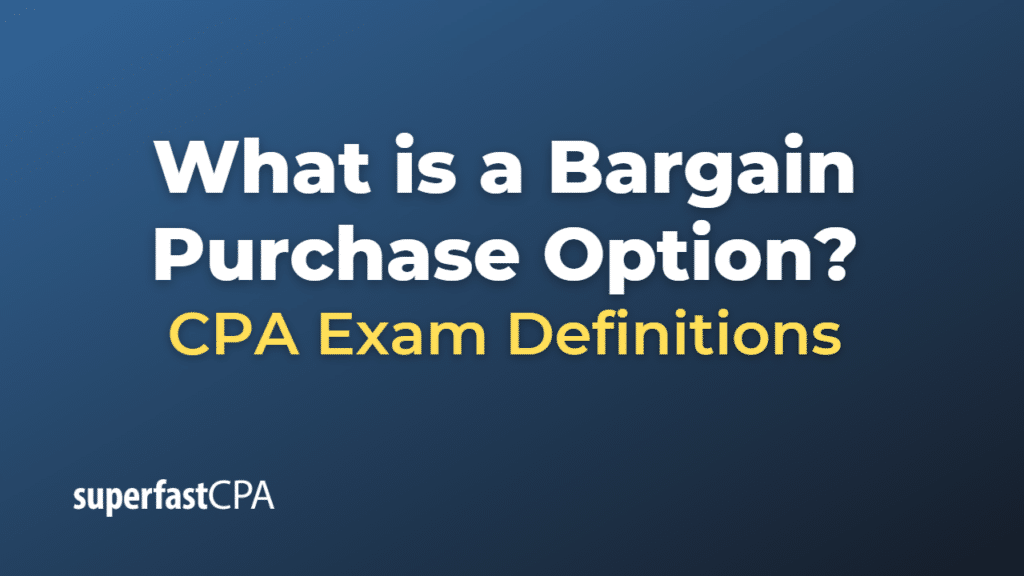Bargain Purchase Option
A bargain purchase option is a term used in leasing and finance to describe a provision in a lease agreement that allows the lessee (the party leasing the asset) to purchase the leased asset at the end of the lease term for a price significantly below its fair market value. This option can be attractive to lessees who anticipate that the asset’s value will remain high or that they will have a continued need for the asset after the lease expires.
In the context of accounting, the presence of a bargain purchase option can affect the classification of a lease. Under both the International Financial Reporting Standards (IFRS) and the U.S. Generally Accepted Accounting Principles (GAAP), if a lease contains a bargain purchase option, it is more likely to be classified as a finance lease (or a capital lease under the previous U.S. GAAP rules) rather than an operating lease. A finance lease is treated more like a purchase of the asset, with the lessee recognizing the asset and a corresponding liability on their balance sheet.
The classification of a lease as a finance lease due to a bargain purchase option can have significant financial reporting and tax implications for the lessee. For example, a finance lease typically results in higher expenses in the earlier years of the lease, as depreciation and interest expense are recognized, compared to the generally straight-line expense recognition pattern for operating leases.
Example of a Bargain Purchase Option
Let’s consider a fictional example of a bargain purchase option in a lease agreement involving a manufacturing company.
Company X is a manufacturing company that requires a specialized piece of equipment for its production process. The equipment has a useful life of 10 years and a fair market value of $1 million. Company X enters into a 7-year lease agreement with Company Y, which owns the equipment, and includes a bargain purchase option in the contract.
The lease agreement states that at the end of the 7-year lease term, Company X has the option to purchase the equipment for $100,000, which is significantly below the anticipated fair market value at that time. The lease payments are set at $100,000 per year.
In this example, the presence of the bargain purchase option could lead to the lease being classified as a finance lease under both IFRS and GAAP. This classification would result in Company X recognizing the equipment as an asset and a corresponding lease liability on its balance sheet.
Throughout the lease term, Company X would record depreciation expense for the leased asset and interest expense related to the lease liability. The total expenses in the earlier years of the lease would be higher compared to an operating lease, due to the combination of depreciation and interest expenses. However, this classification also allows Company X to potentially acquire the equipment at a significantly lower price at the end of the lease term, if it decides to exercise the bargain purchase option.













